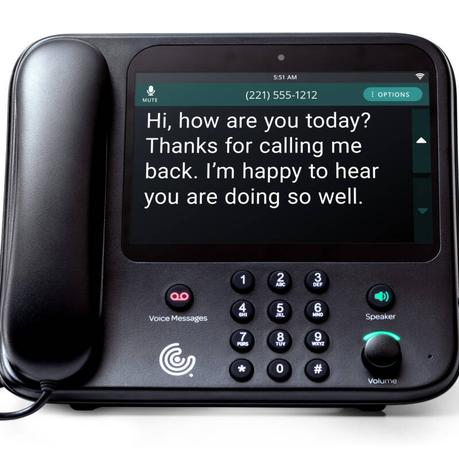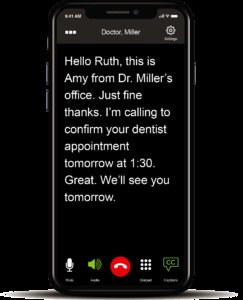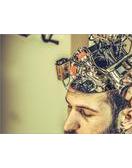Living Your BEST LIFE with Superficial Siderosis
Our readers living with Superficial siderosis should be aware that living your best life means you need to look beyond simply treating the symptoms. Both your physical and mental health will benefit. By moving towards a healthier diet, exercising to your limits, and managing any other coexisting medical issues, you increase your chance of positively affecting your wellbeing. Conversely, smoking, an unhealthy diet, and little to no exercise increase the risk of aggravating your SS symptoms and speeding the disorder’s progression. This article is the fourth installment of our BEST LIFE Series.
Quality of Life Matters
With over 95% of superficial siderosis patients being affected by progressive sensorineural hearing loss and tinnitus,[i] the learning curve on how to adjust can be very steep. In addition, living with a hearing impairment is physically draining. Hearing loss takes a toll on your physical health and emotional wellbeing, leaving you feeling stressed and exhausted. Your family and friends need to realize that you have to work harder than a hearing person to stay engaged with hearing loss. A high-quality set of specialty hearing aids may work wonders in a quiet environment. Still, as a person’s hearing loss slowly progresses, many will find their loss of word recognition leaves them surrounded by a chorus of sound. Background noise and multiple exchanges at gatherings leave a person unable to understand a conversation. Equally disturbing as feelings of isolation is a growing sense of losing your independence. The good news is that there are ways available to manage hearing loss.
Take Advantage of Technology
I’ve shared Gary’s previous experiences with hearing aids specifically designed to help with tinnitus and sensorineural hearing loss. If you would like to read more about them, you may be interested in these articles:
- New Technology With Hearing Loss
- The Frustration Of Hearing Aid Down
- Hearing Loss And The Movies
- Sensorineural Hearing Loss
Closed Captioning Telephones for Hearing Loss
Hearing loss affects the ability to understand individual words over the phone compared to face-to-face communication. This problem is due to the lack of typical visual cues during a conversation. For example, you may not realize how much you have begun to rely on lip-reading or facial expressions.
Gary has not been able to speak directly with his healthcare providers or enjoy a conversation with family over his cell phone for some time now. Even though his hearing aids route the call directly, he can no longer understand 75% of spoken words. Listening to him try even the simplest of conversations is painful. It’s frustrating and embarrassing to ask someone to repeat themselves half a dozen times or more. Often he picks a word out of thin air he thinks is being said -most of the time, it’s not even close.

We recently had a CaptionCall phone and service installed in our home. Since we no longer have a landline, I was curious how difficult it would be to install. It turned out to be reasonably simple. The phone comes with a small Ethernet box that connects to your Wi-Fi. I set Gary’s Bluetooth on his cell phone to auto-connect when he is in the house. When someone calls him on his cell, the audio streams into the phone and a captioning service transcribes his caller, allowing him to read and understand the entire conversation. The captioning service combines an automated speech recognition program and a CaptionCall captioning agent. Yes, someone is listening in on your call. For Gary, the loss of privacy is acceptable. If a healthcare provider wishes to share something private, Gary can turn off the caption and call me over to listen.

There is a short delay at the beginning of every call as the captioning service sets up, along with the caption agent’s identification number. Once your phone call is complete, you have the option of saving the conversation in the phone memory, removing the need to grab pen and paper for writing down details. This particular company also offers a captioning app for Android and iPhones when you’re away from home. Gary hasn’t tried the phone app yet, but he will soon.
Suppose you are a resident of the U.S and your hearing impairment is certified. In that case, the phone and captioning services are available at no cost through the American Disabilities Act. They allow other household members to use the phone, but you must turn off the caption service. While we chose CaptionCall, different companies also offer the same services.
Alarm Clocks and Smoke Detectors for the Hearing Impaired
Specially-designed alarm clocks for deaf and hard-of-hearing people are available in many designs, including clocks with built-in strobe light or a bed-shaker. Some models have an outlet attached where you can plug in a vibrating alert or set a lamp to become a flashing light to wake you up each morning.
Smoke detectors are also available with strobe light and bed shaking features. Interconnected smoke alarms serve someone with severe to profound hearing loss. They include a combination of alerting devices all in one system. The bed shakes, lights flash, and low-tone sounds blare with this system. In addition, in some regions of the U.S, the American Red Cross will install a “Bed Shaker” fire alarm at no cost to the hearing impaired.
American Sign Language App
Knowing how to communicate with someone who has severe hearing loss might seem challenging, but tools and resources are available to help. Even if you are not familiar with American Sign Language (ASL), this app can make learning ASL easier. The ASL app focuses on conversational ASL. It offers over 2,500 signs and conversational phrases and has easy-to-navigate features. The ASL App makes learning easy, accessible, and fun.
To learn More In the U.S visit
To Learn More in the U.K visit
[i] “The intensity of deposition shown on imaging will not always correspond with the degree of disability due to the slow-moving progressive nature of the disorder. 95% of patients will exhibit progressive hearing impairment in both ears. 88% of patients will show signs of progressive ataxia, focusing on wide-based gait and balance issues. 76% will experience myelopathy with pyramidal signs.”, M. Levy MD Ph.D., NORD, rarediseases.org/rare-diseases/superficial-siderosis/

